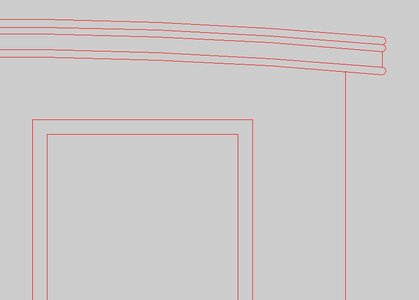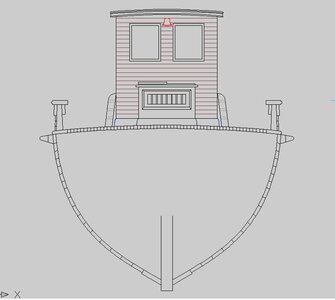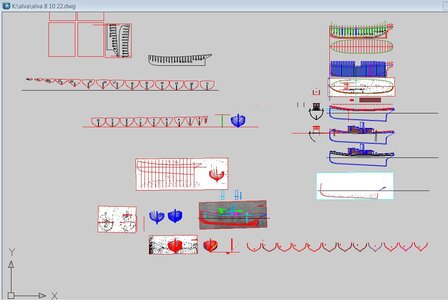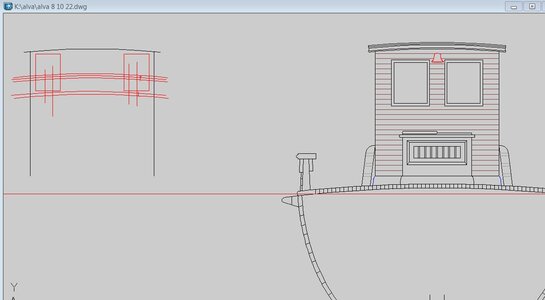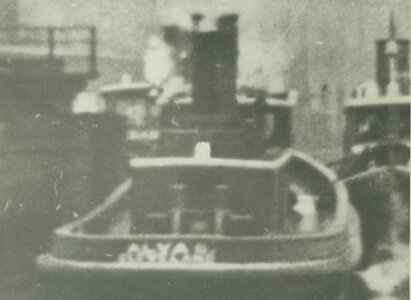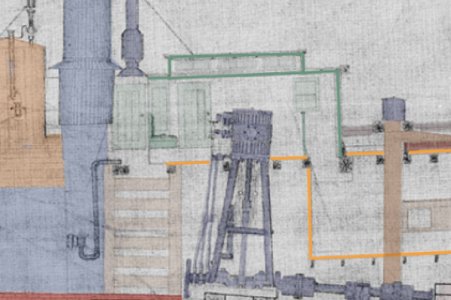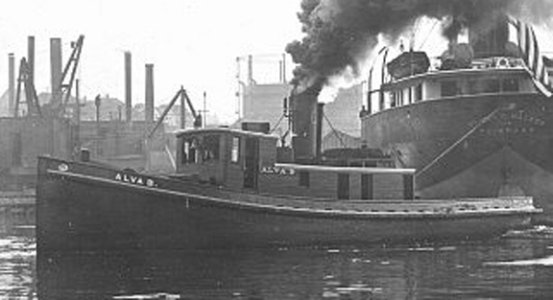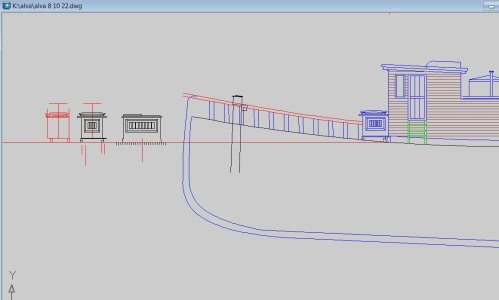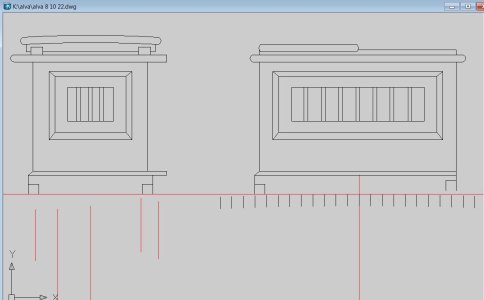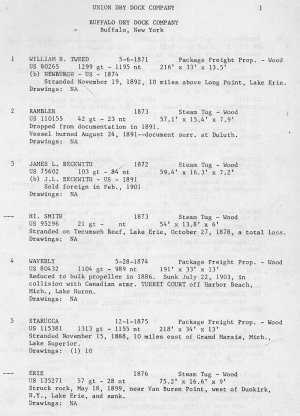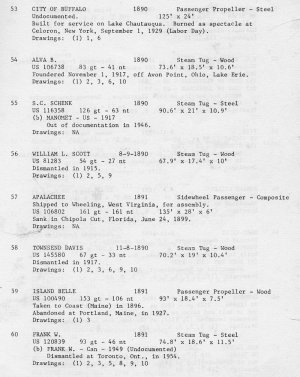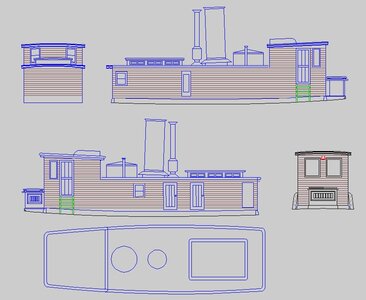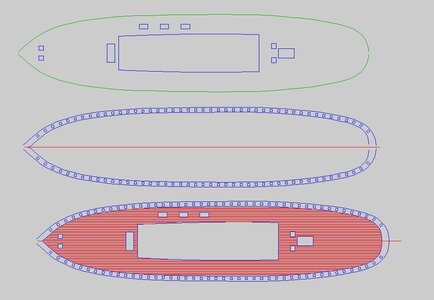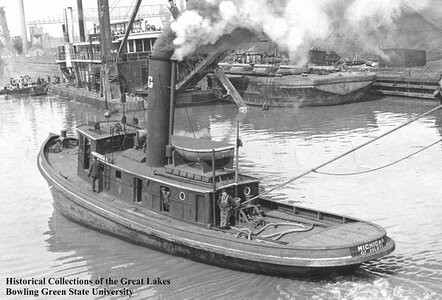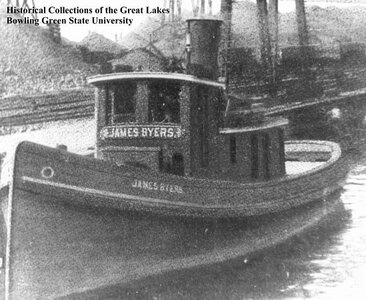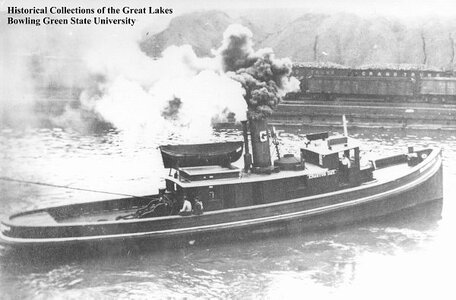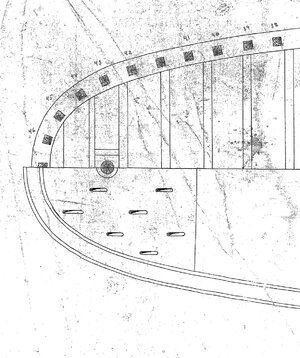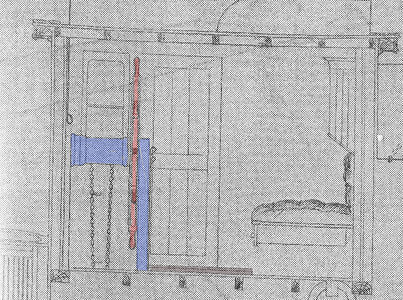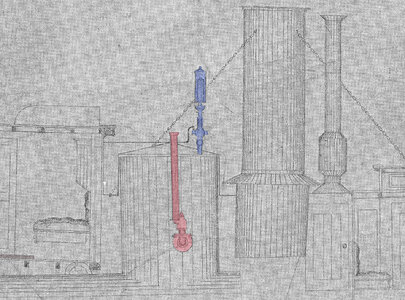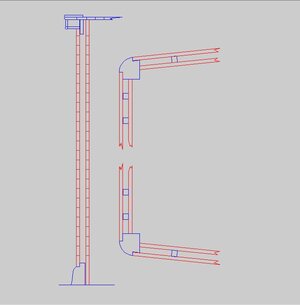- Joined
- Dec 1, 2016
- Messages
- 5,136
- Points
- 728

Hi Dave,
My guess for the aft small funnel is engine/steam exhaust maybe they weren't running a condenser.
As for the forward light tan items they look a bit like bunks, but you wouldn't expect bunks in a harbor tug I would think.
Hopefully you will get answers to your questions.
Cheers,
Stephen.
i am also on a steam engine forum and these guys are the experts
your right it is a steam exhaust
i agree bunks on a harbor tug seems out of place.
for those folling the plan development here is an up date
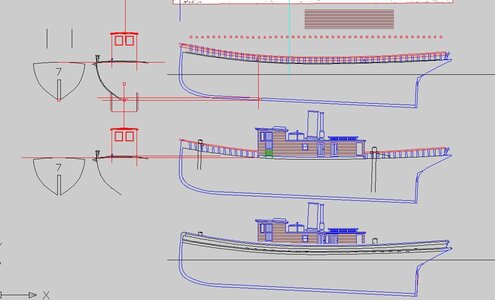
at the bottom is the outside profile
above that is the inside profile in progress without the bulkwark in the way you can see the full cabin down to the deck.
remove the cabin and the top is the cap rail line, stanchions and the deck line. With those references i started a front view of the wheelhouse, that is what is going on at the left.
in the top drawing the vertical red line is bulkhead 7 right at the front of the wheelhouse.
missing in the drawings is the companion way in front of the wheelhouse. Thats because i did not know what is was at first.
the Alva had sisters and the Alva is #54
searching plans sometimes the ID of the plan is a number like #54 or #44
about that whining about the molding well
i found a drawing showing the cabin roof molding so i was able to recreate it, it looks like this
